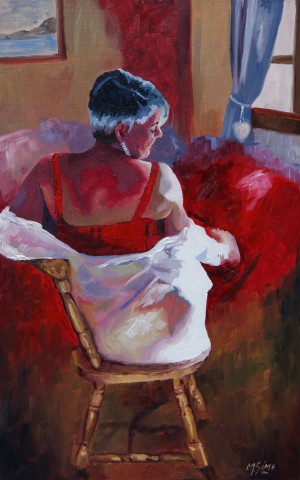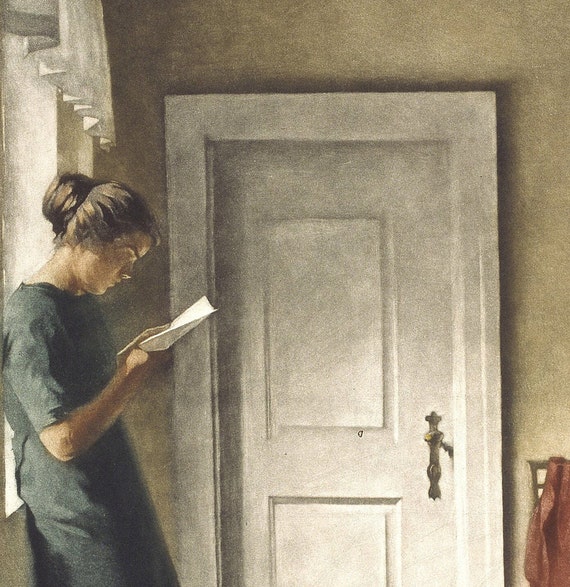Mastering Composition and Shade in Figurative Oil Painting
Mastering Composition and Shade in Figurative Oil Painting
Blog Article
The Advancement of Figurative Oil Paint: Understanding Its Historic Importance and Modern Interpretations
The development of metaphorical oil painting serves as a compelling lens with which to analyze the interplay between artistic expression and historic context. Contemporary musicians, attracting from this rich heritage, are currently reinterpreting the human number in ways that test standard narratives.
Beginnings of Figurative Oil Painting
The origins of metaphorical oil painting can be mapped back to the very early Renaissance in Europe, specifically in the 15th century. The advancement of oil paint permitted for higher deepness of shade and information, boosting the realistic look and vibrancy of their job.

In this transformative age, figures were usually portrayed within contextually abundant atmospheres, showcasing not only their physical features but additionally their mental states. Pioneers such as Jan van Eyck and Titian took advantage of the tool's adaptability, utilizing layering techniques to accomplish luminance and appearance. This development promoted the portrayal of intricate fabrics and the nuances of skin tones, adding to the development of portraiture and narrative scenes.
In Addition, the Renaissance focus on humanism fostered a recognition for distinctiveness, which in turn affected artists to create more relatable and vibrant numbers - figurative oil painting. As a result, figurative oil paint emerged as a powerful vehicle for storytelling and psychological interaction, laying the foundation for future creative movements and designs
Trick Historical Movements
Significant historical movements have actually shaped the development of metaphorical oil painting, each contributing special ideologies and methods that broadened the tool's opportunities. The Renaissance noted a zero hour, highlighting realistic look and the human kind, with musicians like Leonardo da Vinci and Michelangelo pushing the limits of anatomical accuracy and perspective. Following this, the Baroque age brought remarkable contrasts of light and shadow, exhibited by Caravaggio, who infused religious styles with extreme emotionality.
The 19th century presented Romanticism and Realistic look, where musicians such as Delacroix and Courbet tested classic suitables, concentrating on specific expression and everyday life. The introduction of Impressionism even more transformed the medium by highlighting the results of light and shade, causing a departure from typical representation.
In the early 20th century, movements like Expressionism and Cubism redefined metaphorical paint with abstraction and the expedition of psychological depth. Each of these movements not only mirrored the societal adjustments of their times however likewise prepared for modern analyses. The interplay in between these historic activities has developed a rich tapestry of viewpoints and styles, influencing modern musicians in their quest of recording the human experience on canvas.
Strategies and Products Advancement

Throughout the Baroque period, strategies such as chiaroscuro and sfumato arised, enhancing the emotional vibration of metaphorical make-ups. Musicians started to explore lusters and impasto, Clicking Here controling texture and luminance. By the 19th century, advancements like the usage of pre-mixed paints in tubes reinvented availability, enabling artists to paint en plein air and capture the fleeting impacts of light.
The 20th century witnessed the intro of artificial pigments and mediums, which increased the palette and altered the consistency of oil paints. The exploration of new application strategies, such as palette knives and brushes of varying visit the site rigidity, further varied imaginative expression. Jointly, these innovations mirror the advancing partnership in between materials, techniques, and the imaginative vision inherent in metaphorical oil painting.

Contemporary Interpretations
Contemporary analyses of metaphorical oil painting reflect a dynamic discussion between tradition and development, where artists challenge developed norms and explore diverse themes. This evolution shows up in different means, as modern musicians blend classical methods with modern principles, frequently attending to social, political, and personal stories.
Many specialists draw ideas from historic jobs, yet they infuse their pieces with modern point of views, utilizing the human form as an automobile for commentary on identification, society, and gender. Artists increasingly explore abstraction, distortion, and blended media, which permits a wider analysis of the figure and its context.
In addition, making use of brilliant color palettes and unconventional make-ups usually serves to interfere with traditional seeing experiences, provoking important engagement from audiences. This shift in emphasis extends past looks; it mirrors a growing awareness of the intricacies of human experience in an interconnected world.
As figurative oil painting continues to develop, it remains a crucial tool for checking out the nuances of modern life, symbolizing both a respect for heritage and a commitment to modern idea. The result is a rich tapestry of expression that reverberates with the intricacies of the contemporary human problem.
Effect On Modern Art
The impact of metaphorical oil paint on modern-day art is profound, as it has actually constantly influenced a myriad of imaginative movements and practices throughout the 21st and 20th centuries. From Expressionism to Surrealism and past, the expedition of the human figure has remained a central style, other allowing artists to share complex feelings and stories. This focus on figurative depiction has actually led to a re-examination of standard methods, causing cutting-edge techniques that mix realistic look with abstraction.
In addition, modern musicians have actually embraced metaphorical oil painting as a way to deal with political and social issues, making use of the tool to test perceptions of gender, society, and identity. The resurgence of passion in metaphorical operate in current years mirrors a yearning for link in an increasingly electronic globe, where human experience and emotion are paramount.
In addition, the discussion in between figurative oil painting and modern art is noticeable in the jobs of musicians such as Kehinde Wiley and Jenny Saville, that draw on historical recommendations while infusing their pieces with modern relevance. Eventually, figurative oil paint continues to form and redefine modern creative expression, emphasizing its enduring significance in the art world.
Conclusion
The evolution of figurative oil paint highlights its historic significance and versatility across various imaginative movements. From the naturalism of the Renaissance to the emotive expressions of the Baroque and the ingenious techniques of modernity, this tool has actually consistently changed. Contemporary analyses reflect unconventional make-ups and lively shades, cultivating crucial engagement with political and social themes. Inevitably, metaphorical oil painting remains an essential medium for checking out the human experience, resonating exceptionally in today's digital landscape.
The evolution of metaphorical oil paint offers as a compelling lens through which to examine the interplay between artistic expression and historical context.Significant historic movements have shaped the evolution of metaphorical oil painting, each adding distinct philosophies and strategies that expanded the tool's opportunities.As historical activities shaped the trajectory of figurative oil painting, the techniques and materials utilized by musicians have likewise undergone significant transformations. figurative oil painting.The influence of metaphorical oil painting on modern art is extensive, as it has actually continually influenced a myriad of creative motions and methods throughout the 20th and 21st centuries.The evolution of metaphorical oil paint highlights its historical importance and flexibility throughout different artistic motions
Report this page